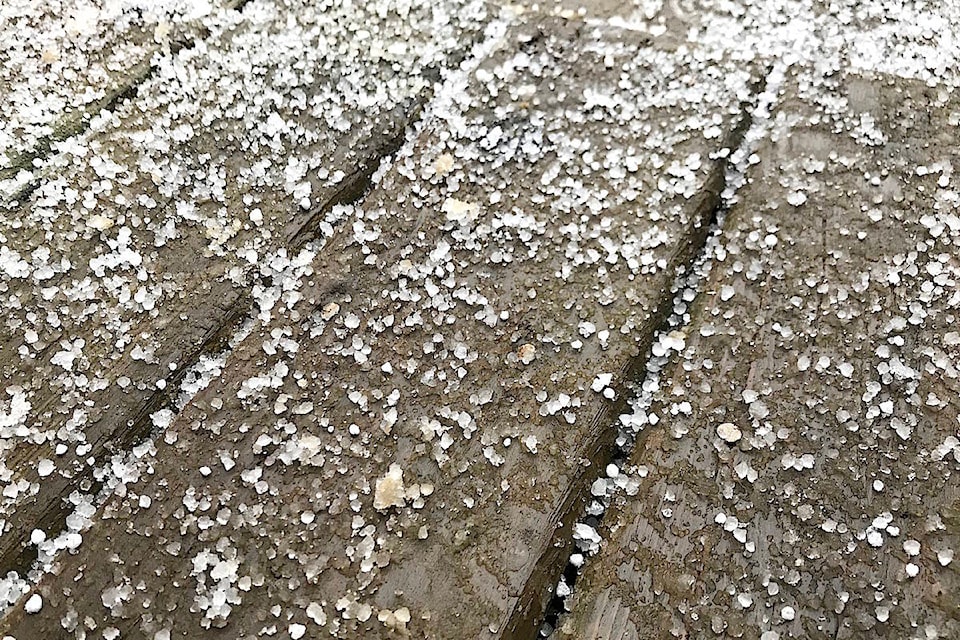March came in like a lamb and went out like a lion in Chilliwack if you count the late-March hailstorm, to borrow from weather folklore.
“However, unlike March of previous years, the weather was generally benign,” said Roger Pannett, Chilliwack’s volunteer weather observer for Environment Canada, in his March 2021 recap.
A series of weak high-pressure ridges were interspersed by a few Pacific frontal systems.
“The most significant weather event occurred on March 28,” Pannett said.
The passage of an intense Pacific cold front, moving through produced heavy rain, hail and abundant mountain snowfalls.
“Strong, damaging, gusty west winds contributed to many power outages. The month concluded with mild, sunny conditions and a high UV index of 7.
Temperature extremes for the month were a sunny maximum of 15.5 degrees Celsius (5.8 C above normal) with 28 per cent relative humidity on March 13 and a frosty low of - 1.5 C (4.7 C below normal) with freezing fog on March 29.
Another folkloric saying goes: “Fogs in March, frosts in May” but hopefully not, Pannett said.
No temperature records were broken.
With mean temperatures at 7.24 C, 1.09 C above normal, it was the ninth consecutive March with above normal temperatures. Since 1895, a trend never previously observed.
With total precipitation 60 per cent below normal, it was the fourth consecutive March and ninth consecutive month with below normal precipitation.
Regional mountain snowpack levels vary from normal to above normal. The provincial average decreased from 114 per cent on March 1 to 112 per cent on March 15. On average, by March 15, usually 90 per cent of the total snowpack has accumulated. Historically, weather conditions in April are crucial to help determine spring-time freshet flood risk.
The 2021 precipitation total to date is 406 millimetres on 55 days compared to the average of 634.6 millimetres on 54 days.
READ MORE: March 2019 saw a dry month in a dry year
Do you have something to add to this story, or something else we should report on? Email:
jfeinberg@theprogress.com
@CHWKjourno
Like us on Facebook and follow us on Twitter.
